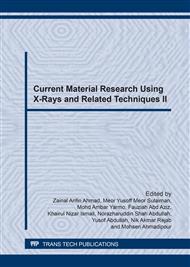p.131
p.136
p.141
p.146
p.151
p.157
p.162
p.167
p.175
Synthesis and Characterization of Cobalt Doped with Yttria-Stabilized Zirconia Electrolytes
Abstract:
Effect of Cobalt doped 8YSZ on the ionic conductivity. SOFCs mostly operate at higher temperature. By substitute with dopants, it can reduce the operating temperature and costs. In this experiment, cobalt (1, 2 and 3 mol%) mixed with 8YSZ and sintered at 1550 °C, hold for two hours. Crystal structure, microstructure, sintering behaviour and ionic conductivity at 300 °C were investigated. XRD demonstrates three phases (cubic, monoclinic and tetragonal) were obtained. It was confirmed that small additions of Co-doping promotes densification, grain growth and ionic conductivity compared to pure 8YSZ. YSZZn obtained the highest ionic conductivity1.36 x 10-5 Ω− 1 cm-1 at 300 °C.
Info:
Periodical:
Pages:
151-156
Citation:
Online since:
March 2017
Authors:
Price:
Сopyright:
© 2017 Trans Tech Publications Ltd. All Rights Reserved
Share:
Citation:


